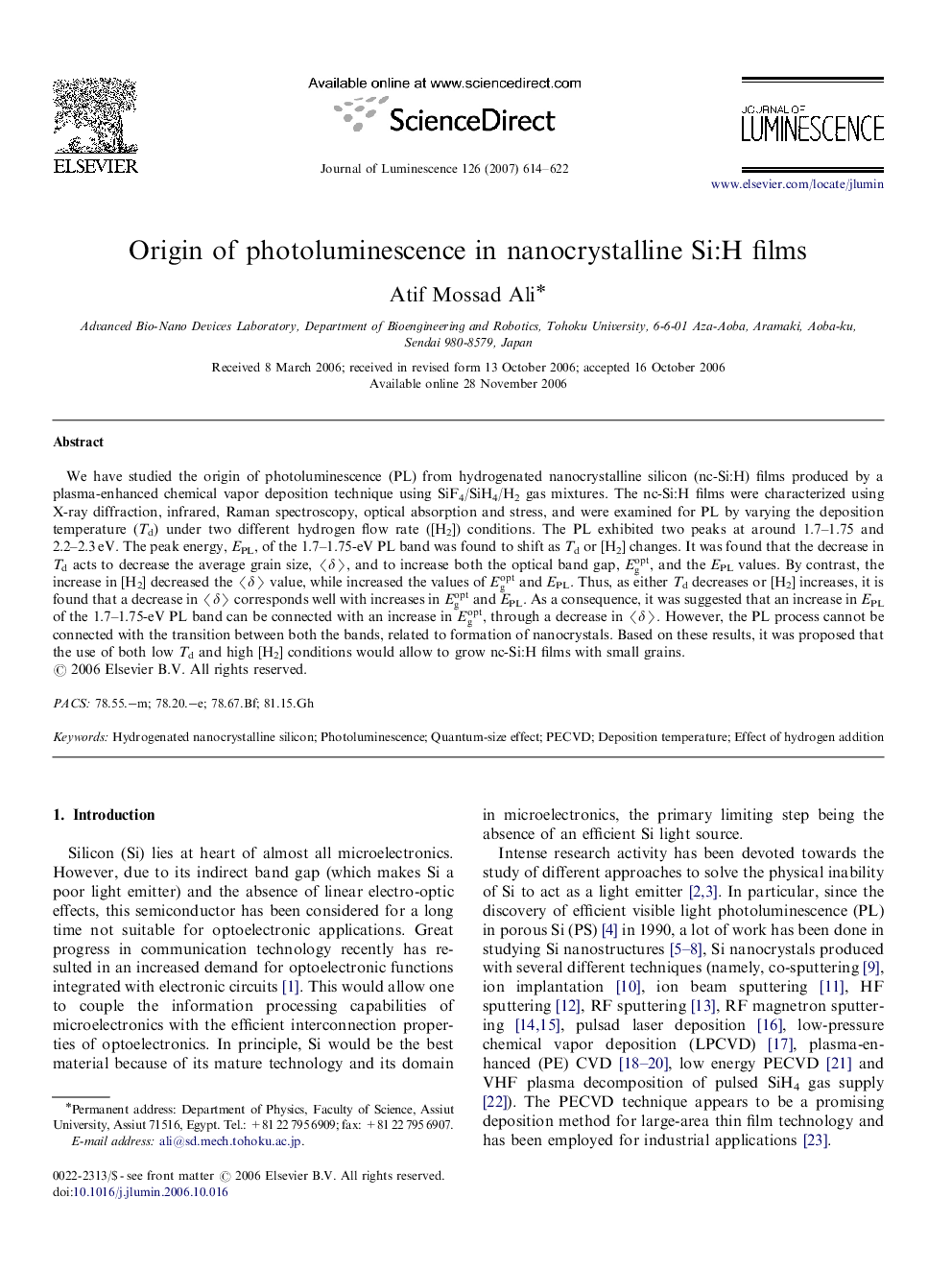| Article ID | Journal | Published Year | Pages | File Type |
|---|---|---|---|---|
| 5403379 | Journal of Luminescence | 2007 | 9 Pages |
Abstract
We have studied the origin of photoluminescence (PL) from hydrogenated nanocrystalline silicon (nc-Si:H) films produced by a plasma-enhanced chemical vapor deposition technique using SiF4/SiH4/H2 gas mixtures. The nc-Si:H films were characterized using X-ray diffraction, infrared, Raman spectroscopy, optical absorption and stress, and were examined for PL by varying the deposition temperature (Td) under two different hydrogen flow rate ([H2]) conditions. The PL exhibited two peaks at around 1.7-1.75 and 2.2-2.3 eV. The peak energy, EPL, of the 1.7-1.75-eV PL band was found to shift as Td or [H2] changes. It was found that the decrease in Td acts to decrease the average grain size, ãδã, and to increase both the optical band gap, Egopt, and the EPL values. By contrast, the increase in [H2] decreased the ãδã value, while increased the values of Egopt and EPL. Thus, as either Td decreases or [H2] increases, it is found that a decrease in ãδã corresponds well with increases in Egopt and EPL. As a consequence, it was suggested that an increase in EPL of the 1.7-1.75-eV PL band can be connected with an increase in Egopt, through a decrease in ãδã. However, the PL process cannot be connected with the transition between both the bands, related to formation of nanocrystals. Based on these results, it was proposed that the use of both low Td and high [H2] conditions would allow to grow nc-Si:H films with small grains.
Keywords
Related Topics
Physical Sciences and Engineering
Chemistry
Physical and Theoretical Chemistry
Authors
Atif Mossad Ali,
